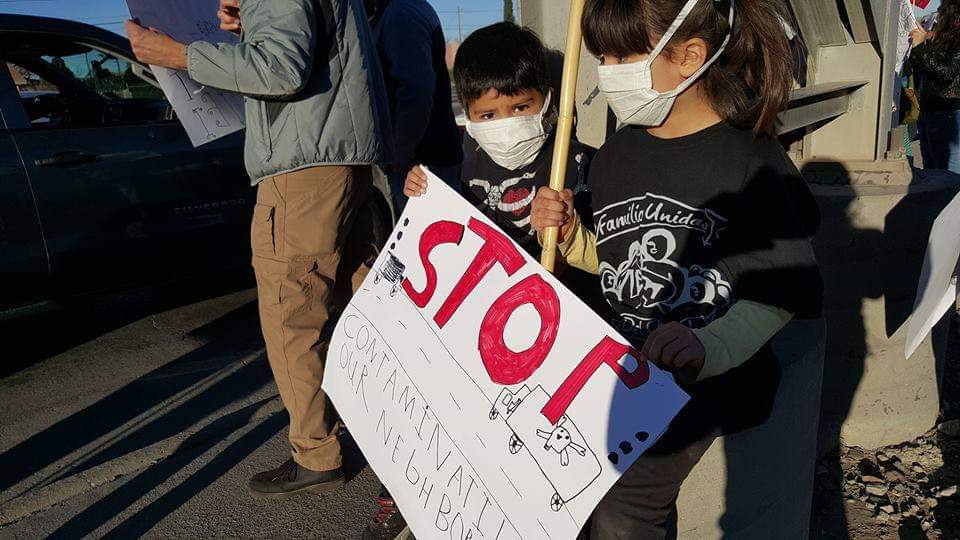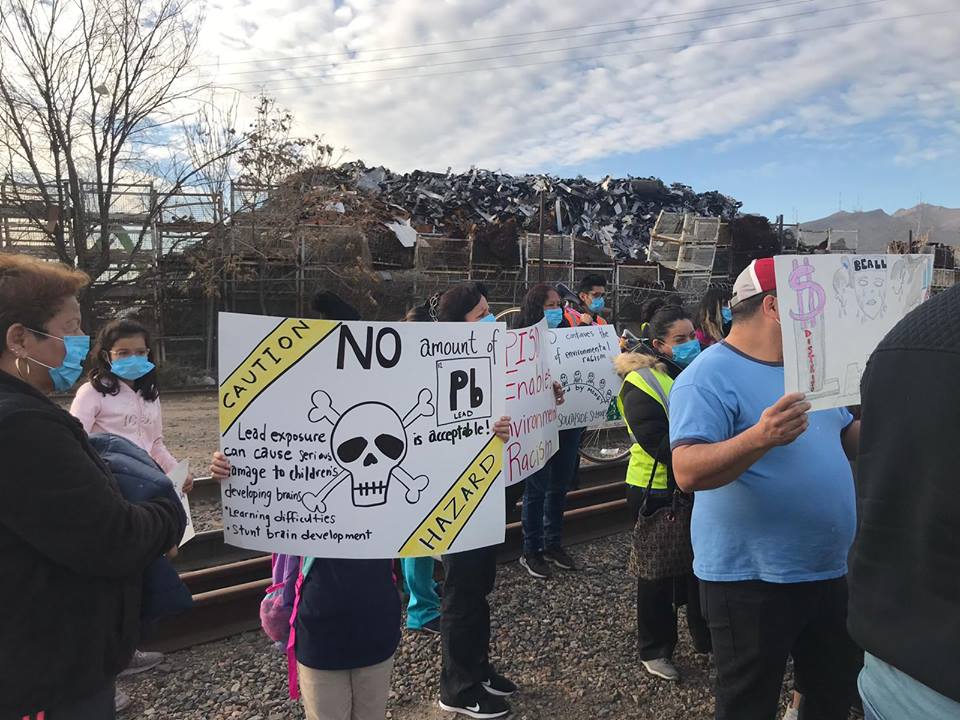
El Paso School Consolidation Exposes More Kids to Lead and Other Hazards, Parents Say
Parents in a low-income neighborhood claim the school district is putting their children at risk by sending them to a campus where researchers found lead levels posing a “moderate to high risk” in 2016.

Hilda Villegas’ daughters Bernice and Katherine are grown now, but she still shudders when she thinks about their years at Frederick Douglass Elementary School in El Paso. The school is located next to railroad tracks and a metal recycling facility, and Bernice recalls smoke regularly billowing from the metal plant. Kids often jumped the fence to play in a canal adjacent to the recycling facility. A 2016 study found lead contamination in the school playground. Bernice, who is 20 now, had a difficult pregnancy, and Katherine, who is still in high school, had delayed growth, Villegas said. She can’t help but wonder if her daughters’ health conditions are related to their exposure to chemicals and metals from the recycling facility.
“We’re sending the kids to these places thinking they’re safe,” she said. “Now I feel so horrible that I didn’t take the time to talk to my kids and that it could have had an effect on my children’s health.”

Villegas is determined not to let it happen again to Diego, her 8-year-old son. Diego currently attends Beall Elementary School, but last month, El Paso Independent School District (EPISD) voted to close the school and send Beall students to Douglass. Both Beall and Douglass are in the Chamizal neighborhood, an historic and overwhelmingly Hispanic community just a stone’s throw from Mexico. Beall and Douglass are just three blocks from each other, but Douglass’ proximity to the recycling facility has prompted a group of parents in Chamizal to protest the district’s decision to close Beall. Children at the three other schools will be sent to other nearby facilities.
The district cites low enrollment and resulting budget deficits as the main reasons for the proposed closures, which will occur after the school year ends. But members of Familias Unidas del Chamizal, a community group founded by Villegas, claim the district is putting their children at risk by sending them to Douglass and that the closures specifically target low-income families. “It’s because we’re poor that they’re doing this to our kids,” Villegas said.
Melissa Martinez, the chief communications officer for EPISD, said the district chose to keep Douglass open and close Beall because the Douglass property is larger and had undergone recent renovations from a previous bond. The district picked four schools — Alta Vista, Beall, Burleson and Schuster elementaries — out of a list of 23 that had enrollment under 65 percent. On average, about 70 percent of students in the district are considered economically disadvantaged by the state. But an Observer analysis found that all four schools had a significantly higher percentage of low-income children than the district average. More than 90 percent of the kids enrolled in three of the four schools being closed are low-income.
“It’s because we’re poor that they’re doing this to our kids.”
In 2016, William Hargrove, a professor at the University of Texas at El Paso, tested for copper and lead in and around Douglass at the request of Familias Unidas. One soil sample collected at the Douglass elementary playground had a lead concentration of 218 parts per million (ppm). EPA has set 400 ppm as a guideline for lead in play areas, but because the agency was considering lowering the level to 150 ppm at the time, Hargrove concluded that the level of lead at the playground presents a “moderate to high risk.” EPA and the Centers for Disease Control and Prevention consider any concentration of lead in the blood unsafe for a child.
Martinez said that the lead contamination was “not at all at critical levels” and that it “wouldn’t endanger anybody.” The school has since covered the playground with one to two inches of new soil at the recommendation of Hargrove. “By no means would we put children at risk,” she said.

Much remains unknown about air quality at the schools in Chamizal. The neighborhood is bordered by Interstate 110 — the international bridge connecting El Paso and Ciudad Juárez — and Interstate 10. The highways see large volumes of truck traffic shuttling back and forth between the maquiladoras in Mexico and warehouse operations in El Paso and contribute to poor air quality in the area. In addition, the Houston Department of Health and Human Services has found that metal recycling facilities vaporize toxic metals such as cadmium, chromium and nickel that can pollute the air and pose a public health hazard. Last year, Familias Unidas asked the school district to conduct air quality testing at the Chamizal campuses, but no testing has taken place.
Villegas said that if she doesn’t succeed in keeping Beall open, she’s going to put Diego in a different school, even if it means going to a different district. “I told [my son] that I’m going to fight for our school and we have to take it as far as we can,” she said.“I’m not going to send my kid to a school that has lead.”


